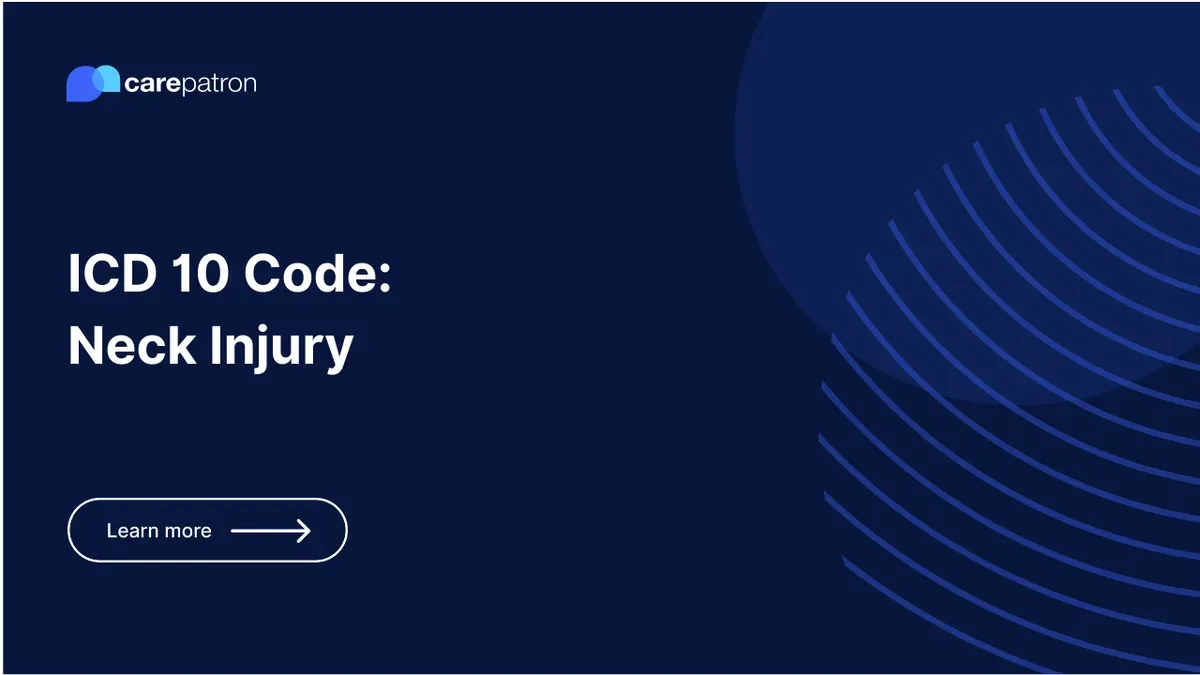
Neck Injury ICD-10-CM Codes
Explore the common ICD-10 codes used for neck injuries, their clinical descriptions, billability, and synonymous terms. Understand when and how to use them.
Use Code
Commonly asked questions
Neck Injury ICD codes are used whenever a patient is diagnosed with a neck injury in a clinical setting. This can be during an initial encounter, a follow-up visit, or even during recovery.
Treatment depends on the specific neck injury. It could involve medication, physical therapy, rest, or, in severe cases, surgery.
A diagnosis code for a neck injury identifies the type of neck injury a patient has been diagnosed with. This is important for treatment, billing, and statistical tracking of health conditions.
EHR and practice management software
Get started for free
*No credit card required
Free
$0/usd
Unlimited clients
Telehealth
1GB of storage
Client portal text
Automated billing and online payments
